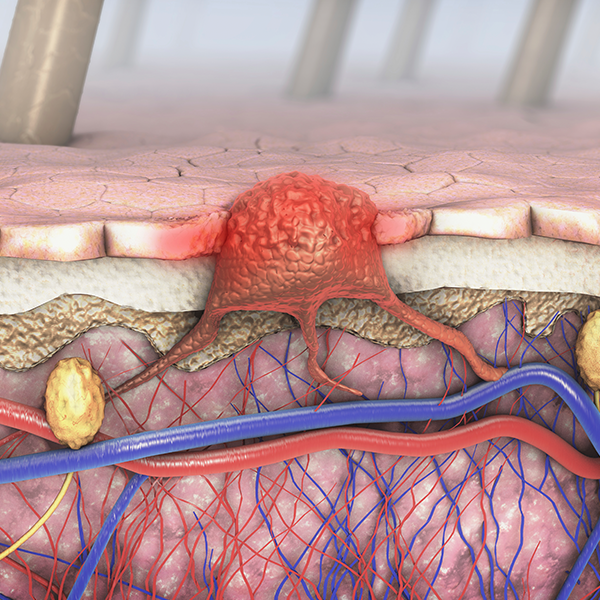ROCHESTER, Minn. — Feb. 27, 2014 — Here are highlights from the February issue of Mayo Clinic Health Letter. You may cite this publication as often as you wish. Reprinting is allowed for a fee. Mayo Clinic Health Letter attribution is required. Include the following subscription information as your editorial policies permit: Visit www.HealthLetter.MayoClinic.com or call toll-free for subscription information, 1-800-333-9037, extension 9771. Full newsletter text: Mayo Clinic Health Letter February 2014 (for journalists only). Full special report text: Mayo Clinic Health Letter Special Report February 2014 (for journalists only).
Older adults often report a good night’s sleep is hard to come by. In an eight-page Special Report on sleep, the February issue of Mayo Clinic Health Letter covers changes in sleep that can occur with aging and how to get better sleep without taking pills.
Poor sleep isn’t an inevitable part of aging. Yet, older adults are twice as likely to be prescribed a sedative medication for insomnia as are young adults. These medications ― zolpidem (Ambien, others), eszopiclone (Lunesta) or zaleplon (Sonata) ― aren’t meant to be used beyond four to eight weeks. Many older adults use them for months or years even though these medications can cause unwanted side effects including residual sleepiness during the day, dizziness, lightheadedness and mental impairment.
Mayo Clinic Health Letter covers several nondrug approaches and strategies that have proved to help relieve insomnia. Strategies include:
Exercise: Evidence shows that incorporating regular exercise into the daily routine improves sleep. Exercise increases the amount of energy expended, and the amounts of “feel-good” hormones (endorphins) the body produces. Both are likely to lead to better sleep.
Food and drink: Reserving caffeine for the morning may be helpful, but some studies show little difference between good and poor sleepers in terms of caffeine intake. It may just be that some people are more vulnerable to the effects of caffeine. Alcohol before bed, especially in large amounts, may help with falling asleep, but has a tendency to cause more fragmented sleep. Heavy meals right before bedtime can keep some people from falling asleep.
Daylight exposure: Light and bright surroundings make people feel alert and awake. Likewise, receiving little daylight or living in a dim environment interferes with nighttime sleep and daytime functioning. Being outside in the late afternoon can help avoid premature sleepiness. If being outside isn’t an option, a doctor might advise light therapy.
Rituals around sleep: A mostly consistent bedtime and wake-up time help reinforce the sleep-wake cycle and promote better sleep. Reading, taking a warm bath or shower or listening to soothing music can ease the transition between wakefulness and drowsiness.
Sleep restriction: Temporarily restricting time in bed, for example by going to bed one hour later than normal bedtime, can help break the insomnia cycle. This moderate sleep deprivation promotes deeper and sustained sleep.
Relax: Evidence indicates that one behavior most strongly associated with poor sleep is the habit of worrying, planning and thinking about important matters at bedtime or right before. Finding ways to relax at bedtime can produce substantial improvement and help reduce the need for sleeping aids. Techniques might include visualization or meditation.
Doctors Developing Less-invasive Procedures to Treat Obesity
Surgery to alter the digestive system is one of the most effective ways to address severe obesity. But, bariatric surgical interventions are costly, often irreversible and carry the risk of short- and long-term complications.
Doctors continue to develop new approaches to reduce risks and costs while maintaining the benefits of the surgery. The February issue of Mayo Clinic Health Letter covers the most common surgeries as well as new incision-free approaches.
Roux-en-Y gastric bypass: The most commonly performed bariatric surgery, the Roux-en-Y procedure drastically reduces the size of the stomach and allows food to bypass a segment of the small intestine. The bypass often leads to the loss of 30 to 35 percent of preoperative weight one year after the surgery and remarkable improvements in cholesterol levels and blood pressure.
Sleeve gastrectomy: The stomach is reduced from a large pouch to a tube. It restricts the amount of food that can be eaten at one time. Two years after surgery, typical weight loss is 20 to 25 percent of the presurgery body weight. A newer operation, it’s the second most commonly performed bariatric surgery.
Laparoscopic adjustable gastric banding (LAGB): An inflatable band is placed around the uppermost part of the stomach and stitched in place. The band is inflated and limits the amount of food that can be eaten. Because LAGB doesn’t involve cutting organs, it’s associated with a lower risk of death than some other surgical approaches. It has been associated with significant complications, and weight loss results generally aren’t as good as with other surgical options.
Mini-gastric bypass: This is similar to the Roux-en-Y procedure but simplifies the rearrangement of the small intestine, making it a less-complex procedure. Long-term results aren’t known yet, but research to date shows that about 95 percent of patients lose about half of their excess weight by 1.5 years after the procedure.
Endoscopic procedures: In the newest approaches to bariatric procedures, doctors make changes to the stomach and small intestine using tools inserted through the throat (endoscopically). These procedures can be performed on an outpatient basis and tend to be associated with quicker recoveries when compared to surgery. They aren’t routinely performed yet and most remain under investigation. As results and knowledge about the techniques become more widely known, it appears these endoscopic procedures will become more common. Generally, they aren’t expected to produce weight-loss results that match those of surgical procedures. Ongoing investigations are aimed at identifying what subgroups of patients might benefit most from less-invasive approaches. Candidates include those with moderate obesity, children and adolescents, or at-risk superobese individuals as a bridge to bariatric surgery.
Preventing Nausea after Surgery
Nausea and vomiting after surgery affect more than 30 percent of people and can lead to complications ranging from inhalation of stomach contents to injury to the surgery site. Nausea and vomiting most typically occur after general anesthesia, where patients are unconscious during surgery. The likelihood of postoperative illness increases with longer procedures and time spent under general anesthesia.
The February issue of Mayo Clinic Health Letter covers medications and drug-free options to reduce the risk of nausea after surgical procedures.
Certain factors may increase the risk of feeling sick after surgery. They include being female, having a history of nausea and vomiting after surgery, having a history of motion sickness and being a nonsmoker. Older adults, however, tend to have less difficulty with postoperative nausea and vomiting.
Prior to general anesthesia, a patient’s risk factors for postoperative nausea are considered, along with the type of surgery being done. Generally, patients are given one or two medications intravenously at the beginning of general anesthesia. Dexamethasone is a corticosteroid that is thought to reduce the inflammation that occurs with surgery and works as an anti-emetic. The second medication, droperidol (Inapsine), interferes with the blood substance dopamine by disrupting the message that could signal the onset of nausea and vomiting. Another anti-emetic, ondansetron (Zofran), may be given just prior to the end of anesthesia for patients considered at high risk for nausea and vomiting. A serotonin antagonist, it blocks serotonin from relaying impulses that would induce vomiting.
In addition, some patients find a skin patch to treat motion sickness (Transderm Scop) applied before surgery to be helpful.
Nondrug approaches may be beneficial, too. One involves stimulating the P6 acupuncture point on the wrist. It’s located three finger-widths up from the inside of the wrist joint. Specially designed wrist strips can be applied like bandages before or after surgery. Studies have shown that stimulation of this acupoint helps reduce the risk of nausea and vomiting with minimal side effects. Acupuncture at P6 also can help.
Aromatherapy also can relieve postoperative nausea. A recent study found that essential oil of ginger or a blend of essential oils ― ginger, spearmint, peppermint and cardamom ― significantly reduced nausea after surgery and reduced the requests for anti-nausea medications.
The nonprescription product QueaseEase is an easy-to-use aromatherapy option. It’s formulated to calm nausea associated with surgery and anesthesia. Other individual essential oils such as spearmint or ginger also may be helpful.
###
Mayo Clinic Health Letter is an eight-page monthly newsletter of reliable, accurate and practical information on today’s health and medical news. To subscribe, please call 1-800-333-9037 (toll-free), extension 9771, or visit www.HealthLetter.MayoClinic.com.
About Mayo Clinic
Recognizing 150 years of serving humanity in 2014, Mayo Clinic is a nonprofit worldwide leader in medical care, research and education for people from all walks of life. For more information, visit 150years.mayoclinic.org, www.mayoclinic.org and newsnetwork.mayoclinic.org.
MEDIA CONTACT: Ginger Plumbo, Mayo Clinic Public Affairs, 507-284-5005, Email: newsbureau@mayo.edu








